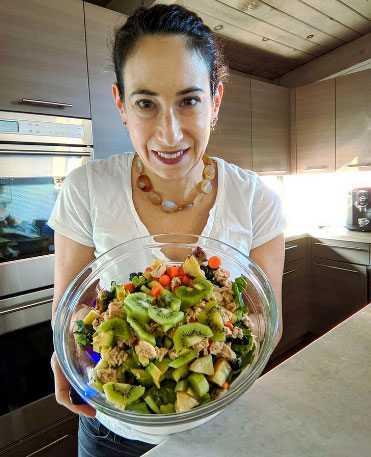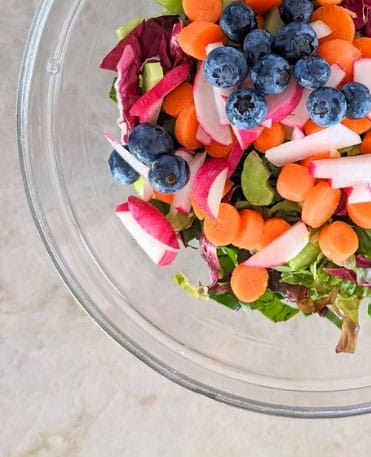 Elimination diets can seem really overwhelming for most people. Believe me, cutting out beloved foods from your daily life is difficult. However, doing elimination diets may help you feel a lot better and help you function like a human again. There are a few key things that can help make these diets a success. So here are my top tips for doing a successful elimination diet.
Elimination diets can seem really overwhelming for most people. Believe me, cutting out beloved foods from your daily life is difficult. However, doing elimination diets may help you feel a lot better and help you function like a human again. There are a few key things that can help make these diets a success. So here are my top tips for doing a successful elimination diet.
What are Elimination Diets?
Before I jump into my top tips, let’s first review what elimination diets are. Elimination diets are short term eating patterns that eliminate specific foods to help relieve whatever symptoms you may be experiencing. Sometimes food can cause issues. The most obvious is digestive problems like gas, bloating, diarrhea and constipation. But other not so obvious food-related symptoms could be chronic inflammation, joint pain, migraines, skin issues and brain fog.
These diets remove specific foods for a period of 4-6 weeks, and possibly up to 12 weeks if necessary. Once symptoms resolve, these foods are added back in one at a time to see if they cause a reaction or recurrence of symptoms. If the food caused a reaction, it is removed from the diet and retested at another time. If it doesn’t cause anything, that food is added back to the diet.
Tip One: Understand the Forbidden Foods
The most important thing to know when starting an elimination diet is what foods you will be removing from your diet. This seems really simple, but this is where most people mess up. Why? Because it’s not always as straightforward as it seems. Take gluten, for instance. Gluten is found in a variety of different grains, condiments, processed foods, candy and even skincare products. You must know where gluten is found to fully eliminate it.
If you are doing an elimination diet that is cutting out a lot of foods, make a list of all of the foods you CAN eat. Post that list on your refrigerator and keep a copy of it to carry around with you (either on paper or on your device). That way, if you are out and about, you have your list with you and can cross-reference ingredients. If the elimination diet is not cutting out a lot of foods, make a list of the foods you cannot eat and keep that with you. The goal with this tip is to never find yourself in a situation where you don’t know if you can or can’t eat something. You want to become an expert on your elimination diet.
Tip Two: Do a Pantry Clean-Out
Before you begin the elimination diet, do a pantry clean-out of all of the foods you won’t be able to eat. It is not necessary to throw these foods out. Place them in a box and put them somewhere where you won’t be tempted to reach for them. If you are doing a multi-phase diet like the Autoimmune Protocol (AIP), place foods into boxes that you will reintroduce sooner, like phase 1 and 2 foods. Put phase 3 and 4 foods in a separate box for later down the road.
Again, most people fall off of their elimination diet when they still have the eliminated foods hanging around their pantry. Make it easier on yourself and just remove them from view.
Tip Three: Trial Recipes in Advance
Since many elimination diets remove large groups of food like dairy and gluten, it may be challenging at first to cook without these ingredients. This is why trialing recipes in advance is important. You may need to learn how to cook with different ingredients and substitutions. For instance, cassava flour can be used for a variety of recipes that originally call for flour, but the liquid amounts in recipes may need to be adjusted.
In addition, it is a good idea to come up with new recipes for all of your meals, including snacks. Try these in advance to make sure you and your family like the new dishes. That way, you can easily create meal plans for yourself while doing the elimination diet. Figuring out what to eat and even meal prepping some food in advance will help avoid the food emergency situation. Food emergencies are another top reason why people fail on their elimination diet.
Tip Four: Research Local Restaurants
While it would be nice to be able to cook everything from scratch when doing an elimination diet, it’s not always practical. There will be situations where you will need or want to eat out. Check out local restaurant menus for options that fit your eating constraints. Create a list of potential restaurants and meals that would work for you. If you know you have plans to go out, call the restaurant in advance and see if they can accommodate your dietary needs.
Tip Five: Practice Symptom Journaling Before Starting
The last tip is not food related, but is a good habit to start before you begin the diet. Symptom journaling is the most obvious way to know if the elimination diet is working. I like tracking the metrics that are most troublesome. I also use a number scale to rate the severity of that symptom. Please do not make this symptom tracking complicated by adding too many symptoms. Just pick the ones you notice the most. Before you begin the elimination diet, use your symptom journal to track. That way, you will be in the habit of doing that before you begin. Hopefully as you move through the elimination diet, your symptom severity scores will improve.
Remember, elimination diets are designed to help you feel better. The more prepared you are before starting one, the more successful you will be. If you need help figuring out what elimination diet to follow or how to do it, please contact me for help. In addition, for more tips on how to improve your autoimmune disease with diet and lifestyle, follow me on Instagram, Facebook and YouTube.


